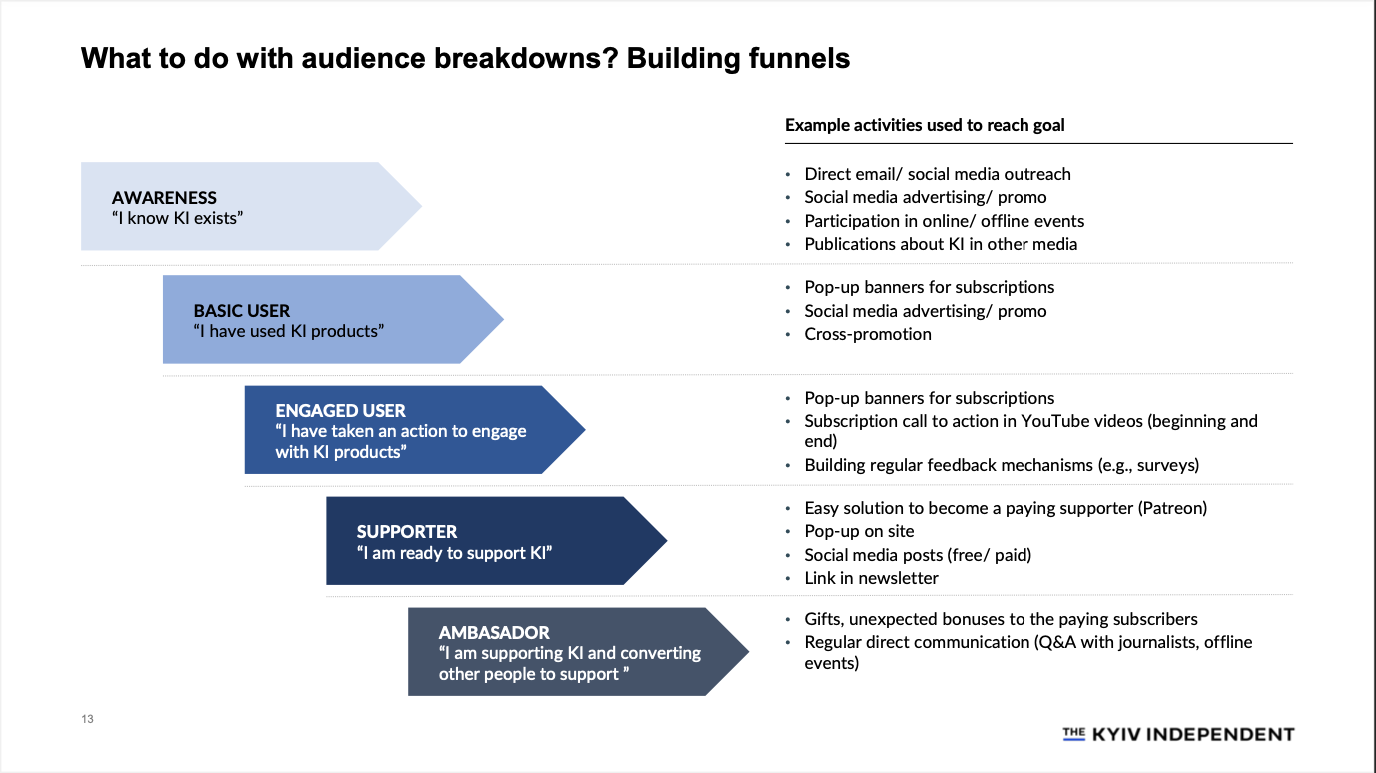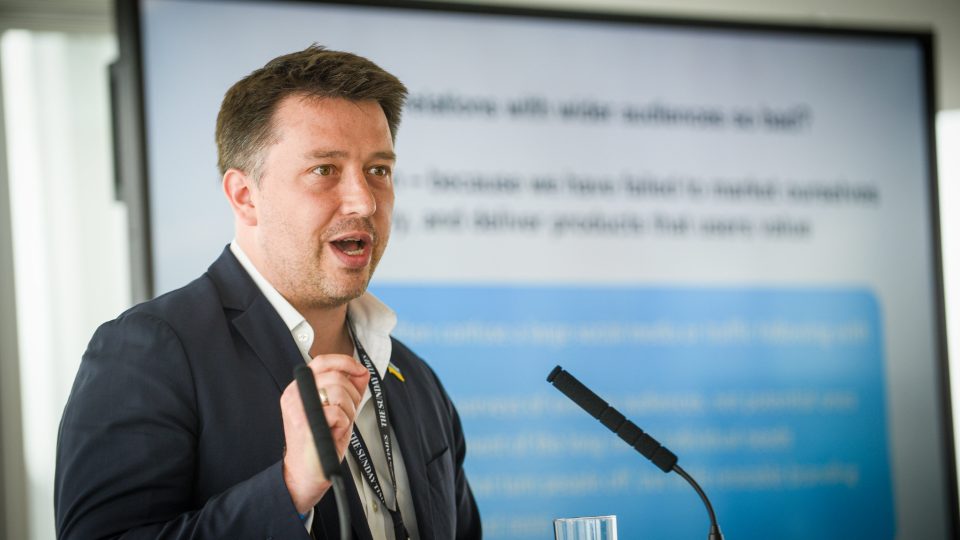Your editorial mission can galvanise the audience and motivate them to support you. But that alone will not win over the sceptical and distrusting public.
Ukraine’s Kyiv Independent (KI) has a powerful origin story: 30 journalists walked out of the Ukrainian newspaper Kyiv Post, standing up to media capture, and subsequently launched their own truly independent news outlet in 2022.
It became the independent voice in the war-torn country shortly afterwards. Leaning into this mission helped it to garner international support in the form of a £1.7m crowdsourcing effort. But a powerful origin story only gets you so far.
“Luck doesn’t make for an effective strategy,” says Jakub Parusinski, CFO at KI in a keynote speech at Newsrewired yesterday.
It faces many of the same challenges around trust and polarised audience, he continues. News outlets need to address this as a critical marketing failure.
Audience expectations of the news have moved on. Younger social media users are not bowled by grandiose slogans about protecting “the truth” or “democracy” – though these ideals are no less important in a world of growing disinformation.
“We are facing a war, and so it would be easy to be lofty and centre around impact. But sometimes it’s worth changing the refrain.”
Jakub Parusinski, Kyiv Independent
Segmenting your audience
What modern audiences do care about is relevance and relatability, a clear theme on the day in conversations around news avoidance and retention of subscribers.
Case in point, Kyiv Post was an English-language newspaper that served expats since the 1990s. But that audience group has largely dissolved and in its wake is the Ukrainian diaspora, local and international businesses, tourists, politicians, foreign expert community, and diplomats in the country.
Sub-segmenting audiences and serving them individually is the only approach that makes sense, Paursinski says. This would have been hard in the past, but artificial intelligence can now do a lot of the heavy lifting.
For example, at the top of his priority list are the Ukraine-focused international community and the Ukraine-linked business community.
He is able to see at a glance the estimated size of those audience groups, the key channels where they engage with the brand (i.e. newsletters, personal contacts, social media platforms), and have an idea of monetisation potential.
It is possible to really drill into this on a niche level, and start thinking about catering to specific think tanks, universities, media profiles, NGOs and so on.
Ultimately, the objective is to move each individual user from someone who is vaguely aware of the news brand to someone who would be an ambassador for you. Each step requires a precise action.
Prioritising personalisation
Parusinski finished by taking inspiration from the banking world, which shares the challenge of not being a particularly “loved” institution but it is an increasingly vital service.
Mobile financing and banking apps have become deeply granular experiences to help users stay on top of spending, budgeting and saving. The news media could learn a lesson here on personalisation and utility.
The Chinese news app Toutiao, for example, has a deeply personalised algorithm not dissimilar to TikTok that keeps people engaged for up to an hour a day because it knows the user wants a combination of “broccoli and cake” content.


